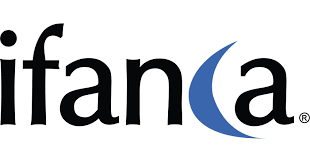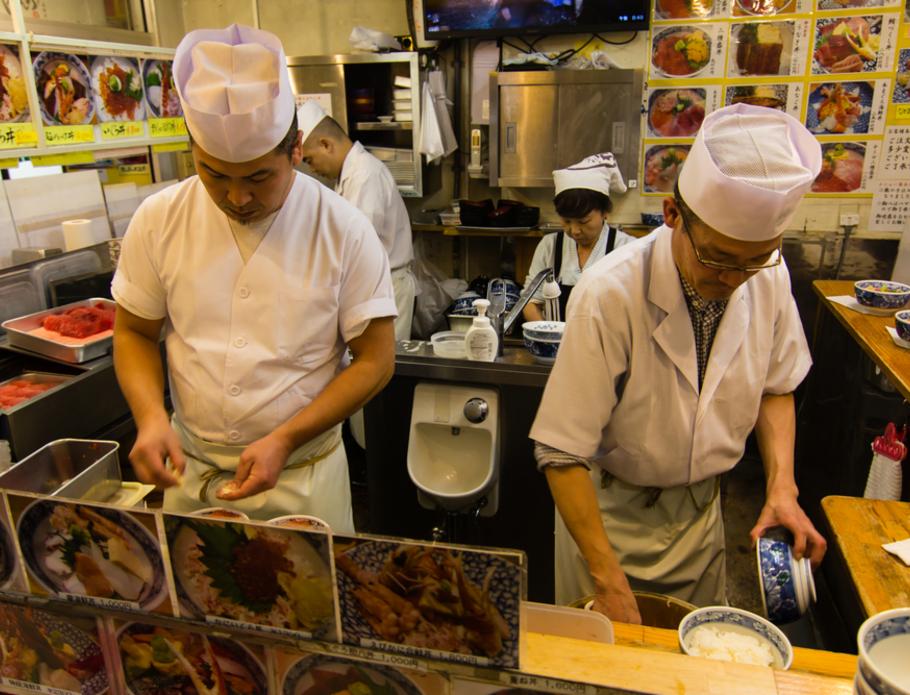
Opportunities for growth in Japan’s halal food sector
Photo: Tokyo, Japan - November 23, 2015: Two chefs preparing lunch for customers in a restaurant at Tsukiji market in Tokyo / Ye Choh Wah / Shutterstock.com
Unlike other non-Muslim majority countries such as Australia, Brazil and the United States, which have large halal sectors due to their export of meat to OIC countries, Japan has yet to make its mark in the halal food markets. But this is all changing with increasing numbers of inbound Muslim tourists and the Japanese government pushing for investment in halal for domestic and export purposes.
| YOUR PAIN POINTS ADDRESSED | ASK YOURSELF | |
|
Scenario: You are a food products manufacturer looking to launch a halal product line in Japan. How attractive is the opportunity? |
How attractive is Japan’s halal food market? |
How large is Japan’s halal food market currently and how is the market regulated? |
| What are the opportunities to cater to tourist demand and what are the challenges in this segment? | ||
| What are the export opportunities and what are some challenges in addressing the export market? | ||
SMALL HALAL DOMESTIC MARKET
Japan’s Muslims number around 190,000, or less than 0.1 percent of the country’s 127.1 million population. With such a small domestic Muslim market, many halal food products are imported and there are only an estimated 52 halal-certified restaurants in the country, a very small fraction of the 470,000 restaurants in the whole nation, according to government figures.
But demand for halal food is growing from within the domestic market as well as from inbound Muslim tourists, prompting an increasing number of halal certifiers.
GROWING HALAL DEMAND
“People will give you a figure of 20 or even 100 certifiers, but even if you include the mosques, which are not active certifiers, there are around 20 in total,” Saeed Akhtar, chairman of the Nippon Asia Halal Association (NAHA) in Chiba, Japan, told Salaam Gateway.
He estimates there are no more than 300 halal certified companies. “That is not many. If you include restaurants and hotels, then maybe around 500 companies. However, there has been a sudden increase in certification over the past two years,” he added.
Indicative of the rise in certification, NAHA certified five companies in 2011 and 2012, but from 2013 onwards, 110 companies received certification. “Out of that figure, about 15 are restaurants, and around 15 percent are selling abroad. The rest have no sales at all or are supplying chains for hotels and restaurants, so [they] remain within Japan,” said Akhtar.
Driving the rise in certification, if not always active sales, has been the rise in Muslim tourists.
In 2004, 150,000 Muslims visited Japan, accounting for 2.4 percent of total visitors.
By 2013, that figure had doubled to 300,000, which accounted for 2.9 percent of total visitors, according to estimates by CrescentRating.
In the years since, Japan has focused on boosting tourism figures, and aims to capitalize on the 2020 Olympic Games to attract 1 million Muslim visitors a year. This is around 4 percent of total tourist numbers, with annual growth forecast at 18.7 percent, according to CrescentRating.
In order to boost tourist figures, Japan started issuing free visas for Indonesians, Malaysians and Thais, reflected in 65 percent of Muslim visitors coming from Southeast Asia.
As the number of Muslim tourists has risen, correspondingly so have halal facilities and services, evident in CrescentRating's Muslim Friendly Travel Index Score for Japan rising from 3.9 (out of 10) in 2013, to 4.5 in 2014.
HALAL MARKET DEVELOPMENTS
Indicative of this trend is TFK Corporation, an airline caterer in Tokyo, which recently invested around $530,000 to upgrade its facilities at Narita International Airport to be halal-certified for in-flight meals.
A mobile phone app – Halalminds – has also been launched, by an Indonesian, to help Muslims locate halal products in Japan.
However, Japan needs to attract more Muslim tourists beyond the Asia-Pacific region if it wants to seriously bolster its halal sector. “There has not been good growth in the halal sector because of Japanese visa requirements, while not that many Muslims are flocking to Japan compared to the Chinese, Koreans or Taiwanese. An issue is that Japanese say, 'first show us the Muslim customers, then we'll get halal certification.' I tell them they have to have a halal environment first, and then Muslims will come. So once the Japanese market sees more Muslim tourists, then demand for halal will grow fast,” said Akhtar.
Once such demand kicks in, there will be significant growth opportunities for Japanese and foreign firms in halal food. “There will be demand from the lunch box industry for instance, especially in tourist spots, like near Mount Fuji, which currently has zero facilities for Muslims,” added Akhtar.
OPPORTUNITIES FOR MANUFACTURERS
Japan aims to invest heavily in the halal sector to be among the top five exporters globally by 2020, according to Rinkal Dawra, Consultant – Retail and Consumer Products Department at Future Market Insights (FMI).
There is certainly untapped potential, with halal food exports to Southeast Asia – a large and fast growing halal food market – less than 1 percent of total exports, according to FMI. But for Japan to compete with top halal food producers such as regional neighbours Malaysia and Thailand, there is still a long way to go.
Change is afoot. The government is pushing for investment in halal for domestic and export purposes to counter a declining population and demand for food, which is slated to drop by over 1 percent a year to 2019, according to Euromonitor International.
Exports are currently focused on Southeast Asia, especially of Japanese specialties like soya sauce and miso, but product offerings need to change in order to cater to new markets.
“Japanese companies need to work on tastebuds to match those of Muslims in the Middle East, Pakistan and India, such as spicy food. They need to do good market research and improve marketing techniques as the chances are there,” said Akhtar.
While some major Japanese food manufacturers have halal products and also entered into joint ventures in East Asia, the majority of newly-certified halal companies are small- and medium-sized enterprises (SMEs) that need further governmental and market support to increase exports.
“SMEs have certain limitations, such as not having English-speaking staff for marketing. There is a gap between the manufacturer and the importer that needs to be linked somehow for more Japanese products to go abroad,” said Akhtar.
HALAL, NATURAL AND ORGANIC
Manufacturers are also keen to export as well as tap into the growing domestic demand for more natural and organic food that can be traced to the source, which halal certification offers.
“We see the consumer inclination for natural and organic food products in Japan. Halal food products have been positioned fairly well amongst such consumers, so we see great potential for halal food in the Japanese market, growing around 7-8 percent by 2020,” Dawra told Salaam Gateway.
|
SUGGESTED ROADMAP |
|
Get to know the customer – with many consumers likely to be inbound tourists, determine which countries they are coming from, their likes and dislikes, and best channels for marketing |
|
Get certified in Japan – There are 20 certifying bodies to choose from, so do further research on which would be better aligned with your strategy and operational capabilities |
|
Develop a high quality halal supply chain – Determine what is needed incrementally for your company to produce high quality halal food |
© Copyright SalaamGateway.com 2016

Paul Cochrane, Senior Associate, DinarStandard